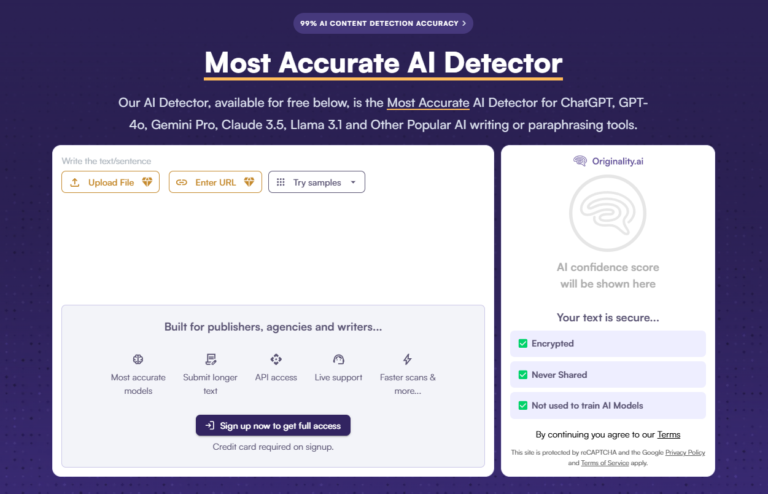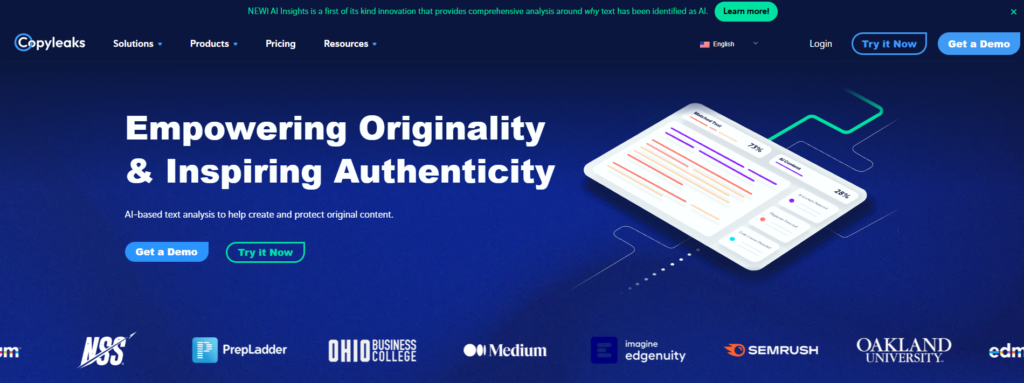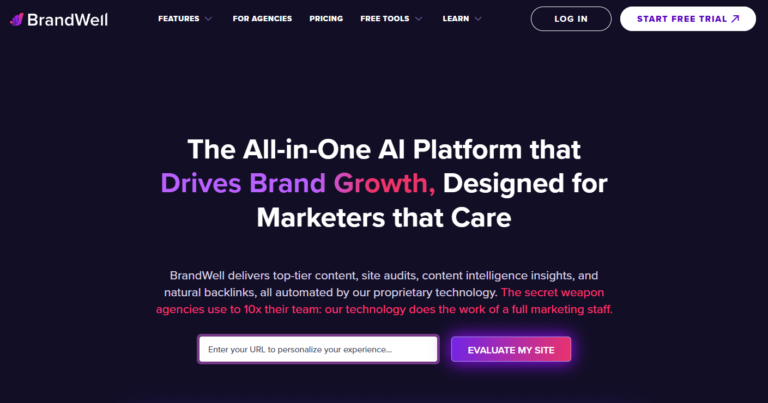Introduction to AI Content Detection
AI content detection refers to the process of identifying whether a piece of text has been generated by artificial intelligence, such as language models like GPT-4 or other machine learning tools. With the rise of AI-generated content, detecting such content has become increasingly important across multiple industries, including education, marketing, and journalism.
Table of Contents
AI Content Detection
Publish by KATHY HAAN Updated October 31, 2024
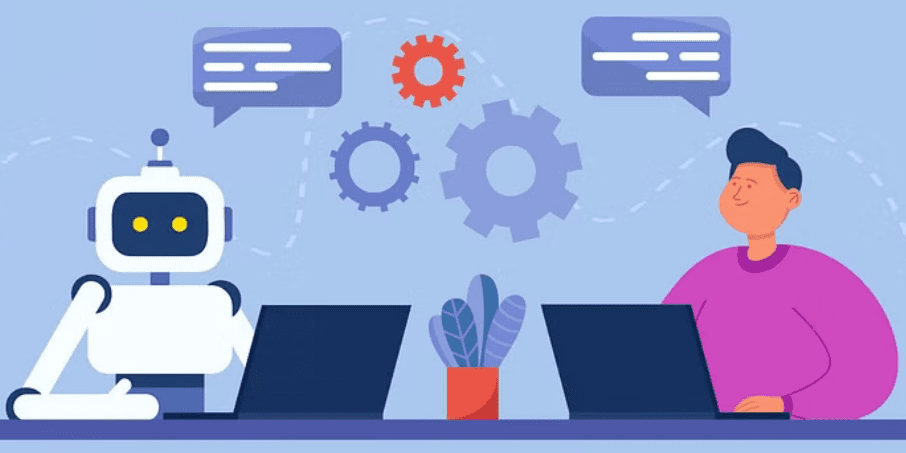
1. The Rise of AI-Generated Content
AI has revolutionized how content is created. Tools powered by advanced language models can generate everything from blog posts to product descriptions, marketing emails, essays, and even complex research reports. While AI content creation offers benefits such as efficiency and scalability, it also presents challenges. For instance:
- Content Authenticity: Can we trust the source and authenticity of a text if it’s generated by AI?
- Plagiarism: In academic or journalistic contexts, AI-generated content raises concerns about plagiarism and originality.
- Misinformation: AI has the ability to generate large amounts of convincing but inaccurate content, complicating the fight against misinformation.
2. Why Detecting AI Content is Important
The ability to detect AI-generated content is vital for maintaining transparency, authenticity, and integrity in various fields. Here’s why it matters:
- In Academia: AI content detectors are increasingly used to ensure that students submit original work and don’t rely heavily on AI-generated assignments, preserving academic integrity.
- In Journalism: Detecting AI content ensures the credibility of news and information shared with the public, helping to combat misinformation and fake news.
- In Marketing: Brands rely on AI detection tools to ensure that their content is original and engaging, avoiding penalties for duplicate content in search engine rankings.
- In Legal and Ethical Issues: In areas where transparency and ethical standards are key, detecting AI-generated content ensures that human oversight remains intact and AI content is used responsibly.
3. How AI Content Detection Works
At its core, AI content detection works by analyzing the linguistic features of a text, looking for patterns that are more common in AI-generated content than in human writing. This can include:
- Repetitive Patterns: AI often generates repetitive phrases or sentence structures.
- Predictability: AI language models might use more predictable word choices compared to the diversity seen in human-written content.
- Inconsistencies in Tone or Style: AI can sometimes create inconsistencies in tone or style, which may signal machine generation.
Many detection tools leverage machine learning models themselves to identify such features, applying advanced algorithms to distinguish AI-generated text from human-written content.
Comprehensive AI Content Detection
Check Your Content Across Top AI Detectors For Unmatched Accuracy

4. Comparing the Top 7 AI Content Detectors
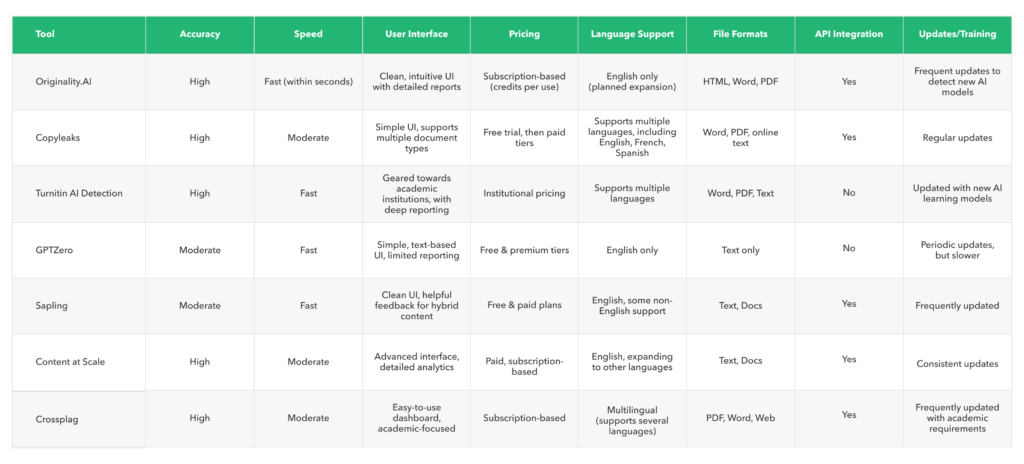
5. Our Methodology for Comparing Detectors
We tested seven leading AI content detection tools using a range of attributes such as accuracy, speed, user interface, pricing, language support, file format compatibility, API integration, and how frequently their algorithms are updated. Below is a grid summarizing the top AI content detectors, followed by detailed descriptions of each tool.
6. Detailed Comparison of Top AI Content Detectors
Originality.AI
Overall Breakdown
Accuracy
High
Speed
Fast
User Interface
Intuitive UI
Updates
Frequently
Description
Key Features
Accuracy
High
Speed
Fast (documents processed within seconds)
User Interface
Intuitive UI with detailed reports
Pricing
Subscription-based (credits per use)
Language Support
Currently English-only, with plans for expansion
File Formats
HTML, Word, PDF
API Integration
Yes, ideal for businesses
Updates
Frequently updated to detect new AI models
Copyleaks
Overall Breakdown
Accuracy
High
Speed
Moderate
User Interface
Simple
Updates
Regularly
Description
Copyleaks offers a versatile solution suitable for a range of industries, from academia to corporate use. It supports multiple languages and file formats, making it a strong choice for international users. With its regular updates and API integration, Copyleaks remains a reliable tool for detecting AI-generated content in multiple formats.
Key Features
Accuracy
High
Speed
Moderate
User Interface
Simple and effective, supporting multiple document types
Pricing
Free trial, followed by paid tiers
Language Support
Multilingual (English, French, Spanish, and more)
File Formats
Word, PDF, online text
API Integration
Yes, widely used in corporate settings
Updates
Regular updates to keep up with new AI models
Turnitin AI Detection
Overall Breakdown
Accuracy
High
Speed
Moderate
User Interface
Academy Focused
Updates
Frequently
Description
Key Features
Accuracy
High, especially in academic contexts
Speed
Fast
User Interface
Academic-focused, with deep reporting features
Pricing
Institutional pricing (not suited for individual users)
Language Support
Supports multiple languages
File Formats
Word, PDF, online text
API Integration
No, primarily focused on academic use
Updates
Frequently updated with new AI models
GPTZero
Overall Breakdown
Accuracy
High
Speed
Moderate
User Interface
Simple
Updates
Periodically
Description
GPTZero is a fast, free tool geared towards users who need a quick detection solution for AI-generated content. While its accuracy may not be as high as other tools, it offers an accessible option for users who want a straightforward interface without extensive reporting.
Key Features
Accuracy
Moderate
Speed
Fast
User Interface
Simple, with limited reporting features
Pricing
Free and premium tiers available
Language Support
English only
File Formats
Text only
API Integration
No API support
Updates
Periodically updated, though less frequently than other tools
Sapling
Overall Breakdown
Accuracy
Moderate
Speed
Fast
User Interface
Clean & Hybrid
Updates
Frequently
Description
Key Features
Accuracy
Moderate
Speed
Fast
User Interface
Clean, offering feedback for hybrid content
Pricing
Free and paid plans
Language Support
Primarily English, with some support for other languages
File Formats
Text, Docs
API Integration
Yes, suitable for enterprise use
Updates
Frequently updated to reflect changes in AI content models
Content at Scale
Overall Breakdown
Accuracy
High
Speed
Moderate
User Interface
Advanced UI
Updates
Consistent
Description
Content at Scale is designed for high-volume users, particularly businesses, who need comprehensive AI content detection with in-depth analytics. While slightly slower than some competitors, its accuracy and advanced features make it a great choice for teams that require more than basic detection.
Key Features
Accuracy
High
Speed
Moderate
User Interface
Advanced, offering detailed analytics
Pricing
Paid, subscription-based
Language Support
English (expanding to other languages)
File Formats
Text, Docs
API Integration
Yes, suitable for large-scale use
Updates
Consistently updated to stay current with AI trends
Crossplag
Overall Breakdown
Accuracy
High
Speed
Moderate
User Interface
Easy to use
Updates
Frequently
Description
Crossplag is a favored tool in the academic world, providing accurate AI content detection with a user-friendly dashboard. Its multilingual support makes it accessible to educators and institutions worldwide. Crossplag is ideal for detecting both plagiarism and AI-generated content in academic settings.
Key Features
Accuracy
High
Speed
Moderate
User Interface
Easy-to-use dashboard, especially for academic institutions
Pricing
Subscription-based
Language Support
Multilingual
File Formats
PDF, Word, Web
API Integration
Yes, with focus on educational institutions
Updates
Frequently updated to meet academic requirements
7. Conclusion
This detailed comparison provides insights into the strengths and limitations of each AI content detection tool. Originality.AI, Copyleaks, and Turnitin AI Detection stand out for their accuracy and robust feature sets. GPTZero and Sapling are better suited for quick, casual use, while Content at Scale and Crossplag offer advanced features and multilingual support for larger enterprises and academic institutions.
Comprehensive AI Content Detection
Check Your Content Across Top AI Detectors For Unmatched Accuracy

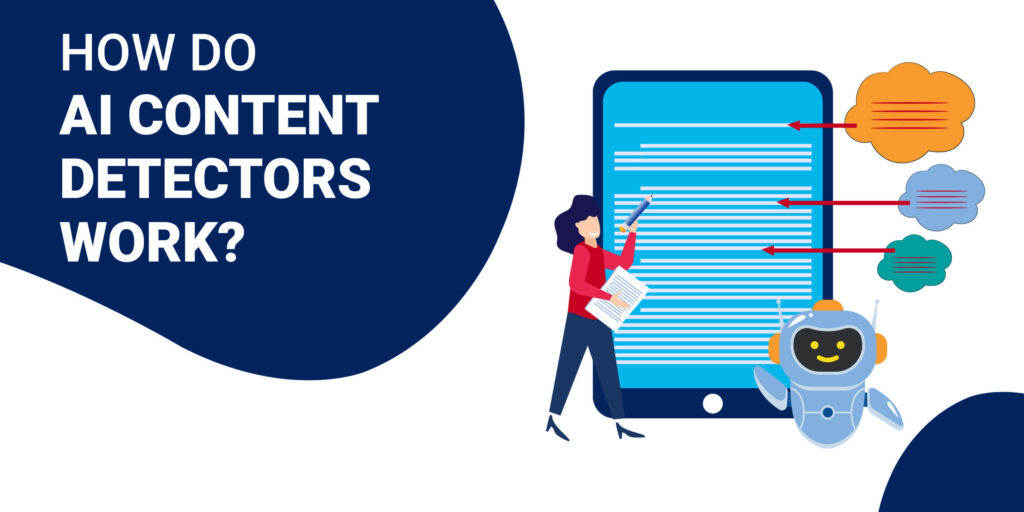
8. How AI Content Detection Works
AI content detection relies on advanced algorithms and machine learning models to determine whether a given piece of text was generated by a human or an AI system. This process leverages natural language processing (NLP) techniques, large datasets, and various statistical methods to detect patterns and characteristics unique to AI-generated content. Let’s break down how AI content detection works in more detail:
9. Language Models and AI-Generated Content
The backbone of AI content generation tools—like GPT-3, ChatGPT, and BERT—are powerful language models that learn from vast amounts of text data to generate human-like responses. These models generate content based on probabilities, predicting the next word in a sentence based on the context of previous words. AI content detectors reverse-engineer this process by analyzing the statistical properties of the text to identify if it follows the patterns typical of AI outputs.
Human-written content tends to have more natural variation, unique sentence structures, and subtle inconsistencies, while AI-generated content may exhibit repetitive patterns, overly structured syntax, and predictable phrasing. AI detectors exploit these differences to identify content that has a high likelihood of being machine-generated.
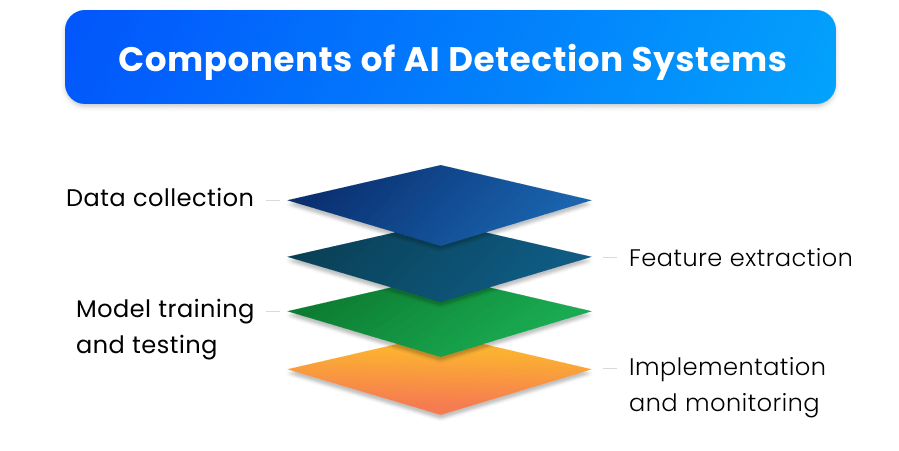
10. Key Components of AI Content Detectors
AI content detectors rely on several key components to analyze and assess content:
- Natural Language Processing (NLP): NLP is the field of AI that focuses on the interaction between computers and human language. AI content detectors use NLP algorithms to analyze sentence structure, grammar, and vocabulary usage to identify discrepancies that suggest AI-generated text.
- Machine Learning Models: Detection tools are often trained on large datasets containing both AI-generated and human-written content. This training allows the models to differentiate between the two by learning the subtle differences in language usage, tone, and structure.
- Statistical Analysis: AI detectors use statistical methods to evaluate text. For example, they may calculate the likelihood of certain word sequences occurring, compare them with known AI-generated patterns, and flag text that has a high probability of being AI-created.
- Neural Networks: Many content detectors use neural networks, which are designed to mimic the human brain’s way of processing information. These networks help the detector identify patterns in the text, such as unusual word pairings or overly formal structures, that AI content often follows.
Comprehensive AI Content Detection
Check Your Content Across Top AI Detectors For Unmatched Accuracy

11. Types of AI-Generated Content That Can Be Detected
As AI-generated content becomes more widespread, detection tools are evolving to keep up with new AI models. Some of the main types of AI-generated content that can be detected include:
- Text Generated by Large Language Models (LLMs): AI models like GPT-3, GPT-4, BERT, and similar technologies generate content by predicting the next word in a sequence based on the context. Detection tools analyze these sequences to identify whether the content was created by such models.
- Hybrid AI Content: Sometimes content is a mix of human and AI-generated inputs, with humans editing or modifying AI-generated text. Advanced detectors can distinguish between fully human-written content and text that has been touched by AI at some stage.
- AI-Paraphrased Content: Some content is human-written but processed through AI paraphrasing tools. These tools may introduce stylistic changes or reformulate sentences. Detection models can spot traces of AI manipulation by examining how phrases have been restructured.
12. AI Detection Tools and Algorithms
The specific algorithms used in AI content detection vary across tools, but many rely on common methods such as:
- Token Probability Analysis: Every word or phrase in AI-generated text is assigned a probability score based on how likely it is to follow the previous word(s). Detection tools can analyze the statistical likelihood of word sequences, flagging those that seem artificially generated.
- Contextual Word Embeddings: AI detectors use word embedding techniques to understand the meaning of words in context. If the contextual relationships between words appear too rigid or structured, it may indicate AI involvement.
- Entropy Measurement: Entropy refers to the randomness of a text. AI-generated content typically has lower entropy because it follows certain predictable patterns. Human-written text often has higher entropy due to its natural diversity. Measuring the entropy can help detectors assess the randomness and variety in the content.
13. Strengths and Limitations of AI Content Detection
While AI content detection tools have become more sophisticated, they do have their strengths and limitations.
Strengths:
- Efficiency: AI detectors can scan and analyze vast amounts of content in a short time, making them invaluable for educators, businesses, and content creators who need to check content integrity quickly.
- Scalability: These tools can process documents, web content, and other text at scale, making them ideal for enterprises that handle large volumes of content.
Limitations:
- False Positives: Sometimes, human-written content may be flagged incorrectly as AI-generated, particularly if the writing style is overly formal or structured.
- False Negatives: Highly advanced AI content generators, particularly those that have undergone human editing, may evade detection. Detectors must constantly evolve to keep pace with improvements in AI writing technology.
14. Continuous Improvement of AI Detection Systems
As AI models improve, so must detection tools. Leading AI detection systems continuously update their algorithms and incorporate feedback from real-world usage to ensure they stay effective. This involves regular retraining of machine learning models on new datasets and the incorporation of evolving detection methodologies.
In summary, AI content detection works by analyzing language models, statistical patterns, and the overall structure of text to determine its origin. As both AI content creation and detection technologies advance, tools will continue to improve their ability to accurately identify AI-generated content in various contexts.
15. Why AI Content Detection Matters
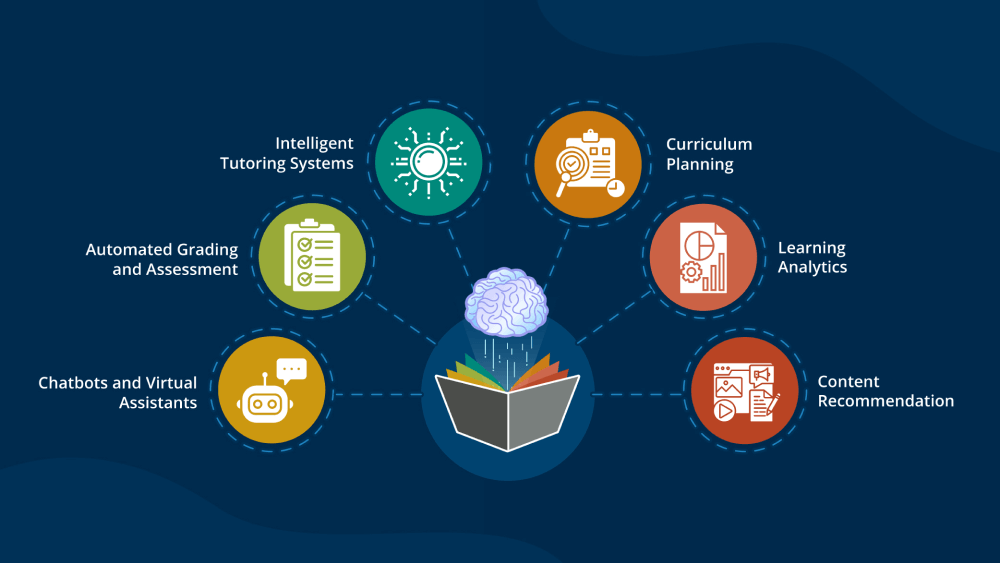
16. Implications for the Education Sector
AI-generated content has gained popularity in academic settings, posing significant challenges for educational institutions. The rise of AI tools like GPT-3 and ChatGPT has made it easier for students to generate assignments, essays, and research papers in seconds. While this technology is groundbreaking, it raises concerns about academic integrity and originality.
AI content detection tools are crucial for maintaining educational standards. By identifying AI-generated text, these tools help educators verify whether student work is genuinely their own or produced using AI. This ensures fairness in grading, upholds the value of academic qualifications, and fosters genuine learning. Institutions using AI detection tools can safeguard academic honesty and discourage unethical practices such as AI-assisted plagiarism.
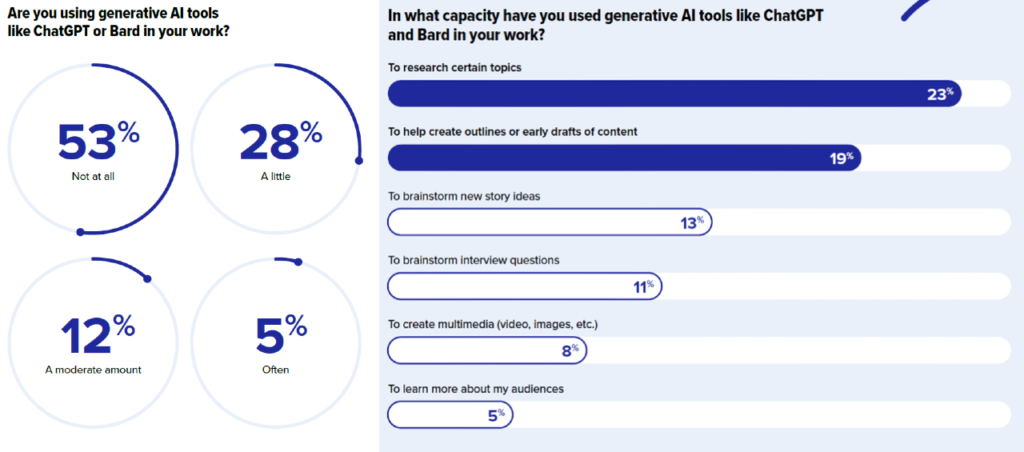
17. Impact on Journalism and Media
In the fast-paced world of journalism, the accuracy and authenticity of information are paramount. AI-generated content is increasingly being used to write news articles, blog posts, and even social media updates. However, this brings risks, as AI-generated articles can sometimes lack proper fact-checking or present biased narratives.
AI content detection tools help media organizations ensure that their articles are human-generated or have been verified by a human editor. This is especially important for maintaining trust with readers, as AI tools can sometimes produce misinformation or misleading content. By using detection tools, media outlets can flag AI-generated content and maintain their reputation for reliability and authenticity, particularly in an era where “fake news” is a growing concern.
Comprehensive AI Content Detection
Check Your Content Across Top AI Detectors For Unmatched Accuracy

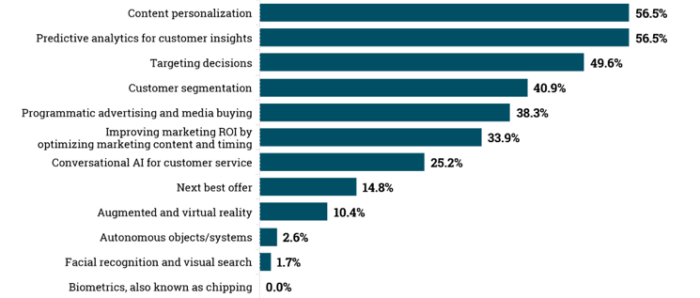
18. Use in Content Marketing
In the digital marketing space, high-quality and original content is vital for search engine optimization (SEO) and audience engagement. However, the temptation to use AI-generated content to produce large volumes of text quickly can lead to issues with quality, originality, and engagement.
AI content detection tools help content marketers ensure their materials are not only original but also tailored to their audience’s needs. Detection tools can verify that content is written by a human or heavily curated by one, which helps avoid penalties from search engines like Google, which prioritize authentic, well-researched content in their rankings. By ensuring the originality of blog posts, web content, and marketing materials, businesses can build trust with their audience, improve their SEO performance, and maintain the integrity of their brand voice.
Comprehensive AI Content Detection
Check Your Content Across Top AI Detectors For Unmatched Accuracy

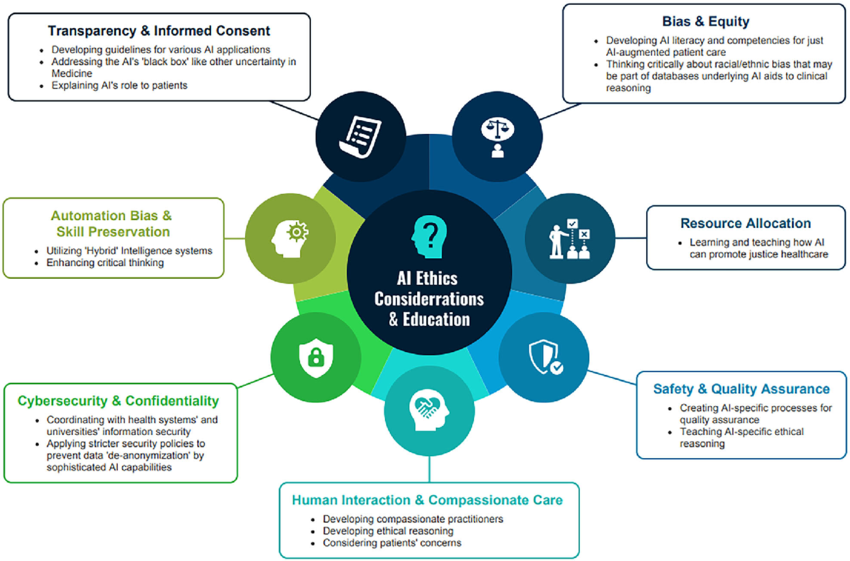
19. Legal and Ethical Considerations in AI Content Creation
The legal and ethical dimensions of AI-generated content are becoming increasingly complex. As more content is generated by AI, questions arise about copyright, authorship, and responsibility. For example, who owns AI-generated content, and can AI be held responsible for creating misleading or harmful information?
AI content detection tools play an essential role in addressing these concerns. By identifying AI-generated content, they help determine the origin of a text, ensuring proper attribution and accountability. This is crucial in legal disputes where the origin of the content needs to be proven, such as in copyright infringement cases or when assessing liability for harmful misinformation.
Ethically, businesses and individuals have a responsibility to disclose when content is AI-generated. Detection tools enable transparency, allowing consumers to understand when they are interacting with AI-generated text. This fosters trust and accountability, ensuring that AI is used responsibly in content creation.
Comprehensive AI Content Detection
Check Your Content Across Top AI Detectors For Unmatched Accuracy

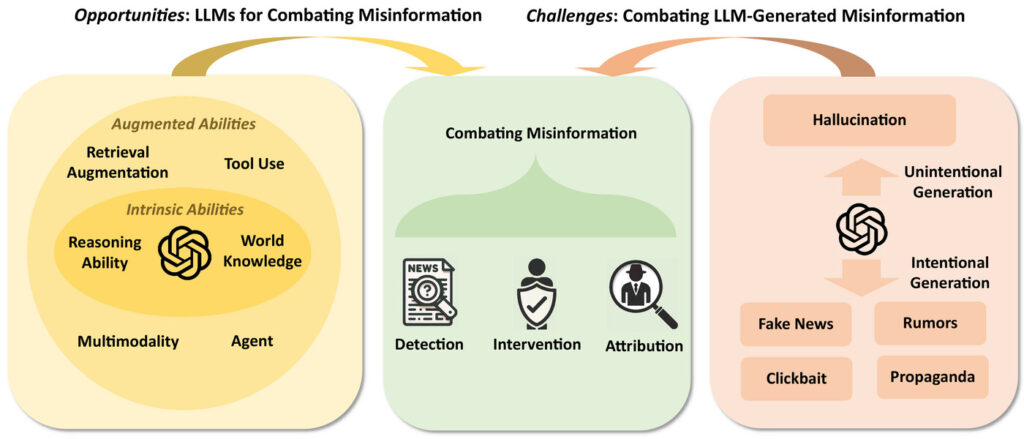
20. Combating Misinformation and Fake News
One of the biggest global challenges today is the spread of misinformation and fake news. AI-generated content can exacerbate this problem by producing large volumes of fabricated or misleading information quickly and convincingly. Social media platforms and news organizations are particularly vulnerable, as AI can be used to create believable yet false narratives that spread rapidly.
AI content detection tools are vital in identifying and stopping the spread of such content. By flagging AI-generated articles and posts, these tools help platforms moderate content more effectively, protecting users from being misled. For governments, organizations, and media outlets, AI detection tools provide an additional layer of security in combating disinformation campaigns and protecting the public from fake news.
Comprehensive AI Content Detection
Check Your Content Across Top AI Detectors For Unmatched Accuracy

21. Case Studies of AI Content Detection
AI content detection is quickly becoming a critical tool in various industries where content authenticity and originality are of paramount importance. Below, we’ll explore some real-world applications and case studies that demonstrate the value of AI content detection tools in business, education, media, and content marketing.
Case Study 1: Safeguarding Academic Integrity at Universities
Problem
Solution
Results
Key Takeaway
Case Study 2: Ensuring Authentic News Reporting for a Media Outlet
Problem
Solution
Results
Key Takeaway
Case Study 3: Avoiding Duplicate Content Penalties in Content Marketing
Problem
Solution
Results
Key Takeaway
Case Study 4: Maintaining Brand Trust in eCommerce
Problem
Solution
Results
Key Takeaway
Case Study 5: Enhancing Content Authenticity in Legal and Financial Sectors
Problem
Solution
Results
Key Takeaway
Comprehensive AI Content Detection
Check Your Content Across Top AI Detectors For Unmatched Accuracy

22. Conclusion: The Value of AI Content Detection Across Industries
These case studies demonstrate that AI content detection tools are not just for academic or media institutions but are essential across a wide range of industries, including marketing, eCommerce, and legal services. From protecting academic integrity to maintaining brand trust, the real-world applications of AI content detection tools are vast and growing. As AI-generated content continues to rise, businesses and institutions must leverage these tools to safeguard originality, trust, and credibility.
23. Pros and Cons of AI Content Detection Tools
AI content detection tools have emerged as essential technologies in today’s digital landscape, offering numerous benefits but also presenting a few challenges. Below, we explore the major pros and cons of using AI content detection tools.
24. Pros of AI Content Detection Tools
- Improved Content Authenticity
- AI content detection tools help ensure that the content is original and human-generated. This is particularly important in sectors like academia, journalism, and marketing, where authenticity is crucial. Detecting AI-generated content can help maintain the integrity of publications, reports, and assignments, preventing the misuse of AI-generated text in contexts where human authorship is required.
- Supports Plagiarism Detection
- In academic and professional writing, plagiarism detection has long been important. However, AI-generated content poses a new challenge. These tools can identify AI-produced work, complementing traditional plagiarism detectors and ensuring that students, writers, and professionals are adhering to ethical writing practices.
- Time Efficiency
- AI content detection tools are fast. A document that could take hours to review manually for signs of AI generation can be processed within seconds by these tools. This allows educators, publishers, and content marketers to handle a large volume of work efficiently, saving valuable time without sacrificing accuracy.
- Preserves Brand Trust
- For businesses, particularly in content marketing and journalism, maintaining trust with their audience is paramount. Ensuring that the content delivered is genuinely human-created helps uphold a brand’s reputation. Using detection tools can prevent the accidental distribution of AI-generated content that may not align with the brand’s voice, tone, or standards.
- Adaptability Across Sectors
- AI content detection tools can be used in a wide variety of industries—from education and journalism to content marketing and law enforcement. As AI-generated text becomes more prevalent, these tools provide flexibility for different users to verify the authenticity of the content they are handling.
- Enhances Human Oversight
- Rather than replacing human oversight, these tools augment it. Editors, teachers, and marketers can use AI detection tools as an additional layer of scrutiny to ensure the highest quality and authenticity in their content, adding an extra level of assurance to human-reviewed materials.
25. Cons of AI Content Detection Tools
- False Positives
- One of the most significant challenges with AI content detection tools is the potential for false positives. Sometimes, human-written content may be flagged as AI-generated due to similarities in writing style or structure. This can cause unnecessary confusion or lead to incorrect assumptions about authorship.
- Inability to Detect Hybrid Content
- Many people are now using AI tools to assist with parts of their writing while editing or adding a human touch to the final product. Current AI content detection tools struggle to accurately identify these hybrid pieces, where AI and human input are blended, making it difficult to determine the true extent of AI involvement.
- Limited Language and Format Support
- While many tools work well for English content, support for other languages can be inconsistent. Some AI content detectors may fail to detect AI-generated text in less common or highly specialized languages, limiting their global applicability. Additionally, these tools may not handle different file formats (e.g., PDF, HTML, Word documents) as effectively as others, reducing their versatility.
- Dependence on Updates and Algorithm Accuracy
- AI content detection tools rely on their underlying algorithms being up-to-date to detect the newest AI-generated text. As AI models evolve rapidly (e.g., new versions of language models like GPT-4), the detection tools must constantly update their algorithms to keep up. Without regular updates, these tools can quickly become outdated and less effective.
- Potential Privacy Concerns
- When using AI detection tools, users often upload sensitive documents or intellectual property for analysis. If these tools do not have robust privacy policies, there is a risk of data leaks or misuse. Users must trust that the detection platform will handle their data responsibly and securely, which can sometimes be a concern.
- Cost
- While some basic AI content detection tools are available for free, the more advanced ones usually come with a price. Subscriptions or per-document pricing can add up quickly, especially for businesses or educational institutions that need to process large volumes of content. This can be a barrier for smaller organizations or individuals with limited budgets.
Comprehensive AI Content Detection
Check Your Content Across Top AI Detectors For Unmatched Accuracy

26. Conclusion: Balancing the Pros and Cons
AI content detection tools are valuable for anyone looking to ensure the authenticity and originality of content. They bring efficiency and trust to content creation processes but are not without their challenges. False positives, limited support for languages or formats, and potential costs can be downsides. However, with continuous improvements in detection algorithms and expanding capabilities, these tools are likely to become even more essential in the battle to maintain human authorship and authenticity in an AI-driven world.
Comprehensive AI Content Detection
Check Your Content Across Top AI Detectors For Unmatched Accuracy

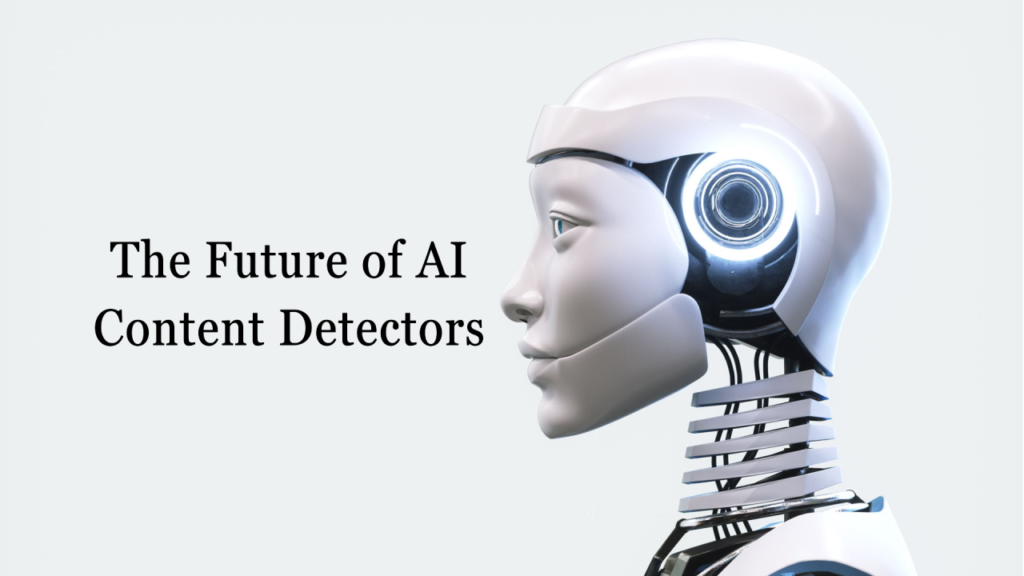
27. The Future of AI Content Detection
28. Trends in AI-Generated Content and Detection
AI-generated content is evolving at a rapid pace. Models like GPT-3, GPT-4, and other advanced language models are becoming more sophisticated, making it increasingly difficult to distinguish between human-created and AI-generated content. As the boundaries blur, the need for more robust detection tools becomes critical.
In the near future, we can expect AI models to create content that’s more nuanced, coherent, and context-aware. This means detection tools will need to advance in parallel. Here are some trends to watch:
- Higher Accuracy in Detection: As AI detectors integrate more advanced algorithms, their ability to differentiate between subtle human and AI-generated content will improve. We can expect greater accuracy with fewer false positives and negatives.
- Hybrid Content Challenges: Content that is a mix of human and AI input (often called hybrid content) will present a new challenge. Detection tools will need to evolve to flag such content and quantify the percentage of AI-generated material.
- Real-Time Detection: Real-time AI content detection, integrated directly into content creation platforms, will become more prevalent. This allows users to receive immediate feedback on whether their content might be flagged as AI-generated, helping them edit and refine in real-time.
Comprehensive AI Content Detection
Check Your Content Across Top AI Detectors For Unmatched Accuracy

29. What’s Next for AI Detection Tools?
As AI-generated content continues to grow, detection tools will face new challenges. Some of the innovations likely to shape the future of AI content detection include:
- Adaptive Learning Systems: Future detectors will incorporate adaptive learning, where they continuously improve by analyzing new content, updating their algorithms, and learning from past errors. This means more accurate results even as AI content becomes more sophisticated.
- Cross-Platform Integration: Detection tools will likely become embedded in popular platforms like WordPress, Google Docs, and content management systems (CMS). This integration allows seamless detection during the content creation process, helping businesses, educators, and content creators maintain originality without additional steps.
- Enhanced API Capabilities: API-driven detection tools will allow businesses to embed AI content detection directly into their workflows. From plagiarism detection in educational tools to automated content checks in media outlets, this API integration will provide broader capabilities and streamline content validation.
30. Evolving with AI Models
As AI models become more advanced, detection tools must evolve as well. One of the key developments will be AI vs. AI detection, where advanced AI-based detectors analyze AI-generated content. These systems will need to detect increasingly subtle cues that distinguish machine-created text from human writing. This will likely involve:
- Behavioral Analysis: Moving beyond textual analysis, future detectors could analyze the behavior of the writer (typing speed, patterns, etc.) to identify whether content was AI-assisted.
- Style and Tone Matching: AI detectors will become more adept at analyzing an author’s unique writing style and tone over time. This will help the detector identify discrepancies in the writing that indicate AI assistance, even if the content appears human-like at first glance.
Comprehensive AI Content Detection
Check Your Content Across Top AI Detectors For Unmatched Accuracy

31. AI Content Detectors in the Fight Against Misinformation
AI-generated content is not limited to creative writing or marketing materials; it plays a significant role in the spread of misinformation. In the future, AI content detectors will play a critical role in combating this issue. Expect innovations like:
- Deepfake Text Detection: As deepfakes are on the rise in the visual and audio space, we are likely to see their emergence in text form as well. Future AI content detectors will need to identify “deepfake” text—content that mimics the writing style of public figures, journalists, or organizations to spread false information.
- Real-Time News Verifiers: AI detection tools will be embedded in news outlets and social media platforms to verify content authenticity before it is published or shared. These tools will scan for AI-generated articles or reports that are designed to mislead readers.
32. Predictions for AI Detection Tools
Looking forward, we can anticipate several developments that will shape the future of AI content detection tools:
- Integration with Blockchain for Content Authenticity: Blockchain technology could be used to authenticate content sources. Content that passes through AI detection tools may be linked to a blockchain, ensuring its originality and integrity. This could be especially useful in fields like journalism, academic publishing, and legal documentation.
- Ethical AI Usage Protocols: As AI content creation grows, there will be increasing demand for ethical guidelines regarding AI usage in content generation. Detection tools may evolve to work within these frameworks, helping ensure that content complies with ethical standards.
- AI Collaboration Rather Than Opposition: While AI detection tools are currently used to combat AI-generated content, the future may see more collaborative efforts. AI tools might suggest edits that help blend AI content with human creativity more seamlessly, offering a hybrid content creation experience that is both efficient and ethically sound.
33. Future Challenges for AI Content Detection
While the future of AI content detection looks promising, there are significant challenges ahead. These include:
- Keeping Up with AI Evolution: AI models are improving at an unprecedented rate. Detection tools will need to constantly evolve, or risk being left behind by increasingly sophisticated AI-generated content.
- False Positives and Negatives: As detectors become more sensitive, the risk of false positives (flagging human-written content as AI) and false negatives (missing AI-generated content) will increase. Fine-tuning these tools will require constant research and development.
- Privacy and Data Security: As AI content detectors are integrated across various platforms, ensuring the privacy and security of the content being analyzed will become a pressing concern. How data is handled, stored, and processed will need to comply with global data protection standards.
34. Conclusion
In today’s digital landscape, where AI-generated content is becoming more prevalent and sophisticated, understanding and utilizing AI content detection tools is essential for ensuring authenticity and trust. Whether you are in education, journalism, marketing, or any other field where content creation is key, the ability to detect AI-generated text can help maintain the quality and credibility of your work.
Throughout this guide, we’ve explored the importance of AI content detection, the underlying technology, and the best tools currently available. We’ve also provided a comprehensive comparison of top AI detectors, highlighting their strengths and limitations to help you make an informed decision.
Key Takeaways:
- AI Content Detection Is Crucial for Content Authenticity: As AI-generated content becomes more widespread, detection tools are vital for maintaining the originality of published work, ensuring compliance, and safeguarding intellectual property.
- Accuracy and Speed Are Key Factors in Choosing a Detection Tool: When comparing tools, accuracy in detecting AI-generated content is paramount, but speed and ease of use are equally important for day-to-day tasks.
- Multiple Industries Benefit from AI Detection: From education to journalism and marketing, a wide range of sectors rely on AI content detectors to uphold ethical standards and avoid potential pitfalls such as plagiarism or misinformation.
- The Future of AI Content Detection Will Evolve Alongside AI: As AI content creation tools become more advanced, detection technology will need to evolve in parallel, continuously improving to keep up with new AI models and techniques.
35. Frequently Asked Questions (FAQ)
What is AI content detection?
AI content detection refers to the process of using algorithms and machine learning models to analyze text and determine whether it was generated by an AI, such as GPT-3, or written by a human. These tools help in identifying content that may have been created by automated systems.
How do AI content detectors work?
AI content detectors work by analyzing text patterns, word choices, and sentence structures. They compare these against known datasets of human and AI-generated text to determine the likelihood that a piece of content was created by AI.
Can AI content detectors accurately identify AI-generated content?
While AI content detectors are becoming increasingly accurate, no tool is 100% foolproof. Detection accuracy depends on the sophistication of both the AI that generated the content and the detection tool. However, most tools offer a confidence score, helping users gauge how likely the content was generated by AI.
What are the top AI content detection tools?
Some of the top AI content detection tools include tools like GPTZero, Originality.ai, and Content at Scale’s AI Detector. Each has different strengths, such as accuracy, interface, or pricing.
Can AI detection tools distinguish between AI and human-edited content?
Some detection tools struggle to differentiate between AI-generated content that has been human-edited and fully human-written content. The more heavily edited the AI-generated text is, the harder it is to detect. However, some tools can still spot subtle AI characteristics.
Are these AI content detectors reliable for languages other than English?
Most AI content detectors are primarily designed for English text, but many are expanding their language capabilities. Accuracy tends to drop in languages with less training data available, so users should exercise caution when detecting AI content in non-English languages.
How accurate are AI content detectors?
Accuracy can vary based on the tool, the text, and the type of AI that generated the content. On average, top-tier detectors can identify AI-generated content with a high degree of confidence, often between 80% and 95%, depending on the complexity of the content.
Can AI content detection tools detect GPT-4-generated content?
Yes, many AI content detection tools are constantly updating their models to recognize content generated by advanced AI models like GPT-4. However, detecting GPT-4 content can be more challenging due to its ability to produce highly sophisticated text.
Are there free AI content detectors available?
Yes, several AI content detection tools offer free versions or free trials with limited features. However, most advanced tools with higher accuracy typically require a paid subscription or pay-per-use model.
How fast do AI content detection tools analyze text?
The speed of analysis depends on the tool and the length of the text. Most AI content detectors can process and provide results within seconds to a minute for average-length articles or documents.
How can AI content detection benefit my business?
AI content detection helps businesses ensure the originality and authenticity of content, which is crucial for maintaining trust with audiences. It also helps in detecting plagiarism or misuse of AI in content production, ensuring quality standards.
Can AI content detection tools prevent plagiarism?
While AI content detectors can identify AI-generated text, plagiarism detection tools are separate and designed to identify copied content. However, many tools combine both plagiarism detection and AI content detection to provide a comprehensive analysis of originality.
How often should I check my content with an AI content detector?
The frequency depends on your content strategy. For businesses producing frequent content, regular checks (weekly or monthly) ensure the quality and authenticity of the material. Checking before publishing is also a good practice.
What types of content can AI detection tools analyze?
AI content detection tools can analyze a wide range of content, including blog posts, articles, essays, research papers, social media posts, and more. Some tools can even analyze PDFs and web content.
Do AI content detectors have API integration?
Yes, many AI content detectors offer API integration, allowing businesses to incorporate AI content detection directly into their workflows or platforms for real-time analysis.
Can AI content detectors handle long-form content?
Yes, most tools can handle long-form content, although processing times may increase with longer documents. Some tools may have limits on the number of words or characters per submission, but they typically support bulk uploads or extended text length in their paid versions.
How much do AI content detection tools cost?
Pricing varies significantly based on the tool and the features offered. Some tools offer pay-per-use models, while others use subscription pricing. Basic plans may start around $10 to $30 per month, while more advanced features and enterprise-level usage can go up to hundreds of dollars per month.
How do AI content detectors compare to traditional plagiarism checkers?
AI content detectors specifically focus on identifying content generated by AI systems, while plagiarism checkers compare text against a database of known human-written content to identify duplicate or copied content. Many tools offer both features, but they serve different purposes.
Are AI content detection tools updated regularly?
Yes, most reputable AI content detection tools are updated frequently to keep up with advancements in AI-generated content, including the latest language models and techniques for bypassing detection.
What is the future of AI content detection?
As AI content generation continues to evolve, detection tools will become more sophisticated. Future developments may include more robust detection of hybrid AI-human content, improved accuracy in different languages, and real-time detection capabilities integrated into various content management systems.
Comprehensive AI Content Detection
Check Your Content Across Top AI Detectors For Unmatched Accuracy


